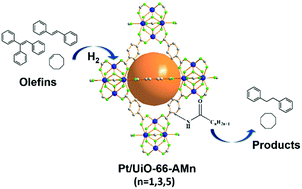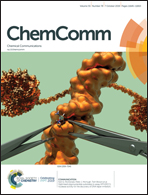Engineering channels of metal–organic frameworks to enhance catalytic selectivity†
Abstract
This report describes a facile strategy to enhance the catalytic selectivity by tuning the pore sizes of metal–organic frameworks (MOFs) in nanoparticles (NPs)/MOF composite catalysts. A general post-synthetic modification method was used to adjust the pore sizes of MOFs by using anhydrides with different chain lengths to react with amino groups in the ligands. The modified NPs/MOF catalysts exhibited enhanced size selectivity performance in the hydrogenation of olefins, which revealed the flexibility of MOFs as supporting materials for heterogeneous catalysis.



 Please wait while we load your content...
Please wait while we load your content...